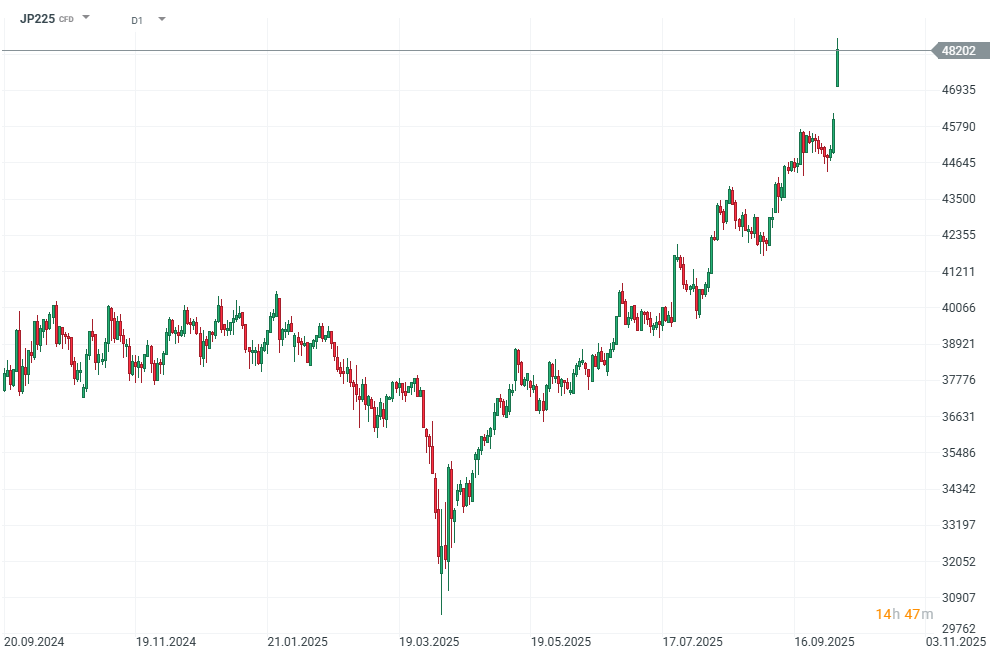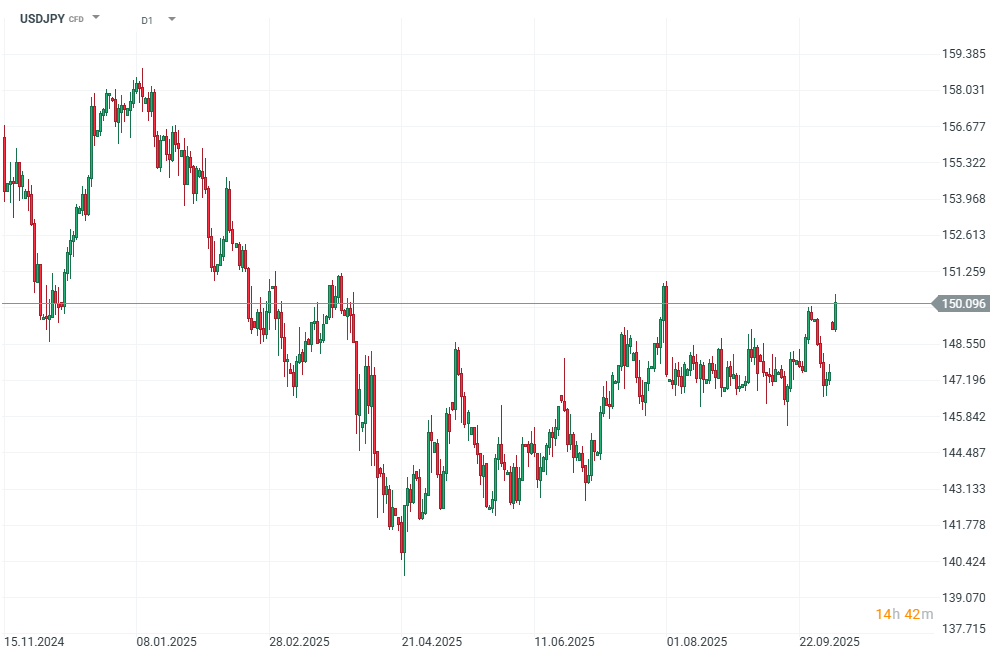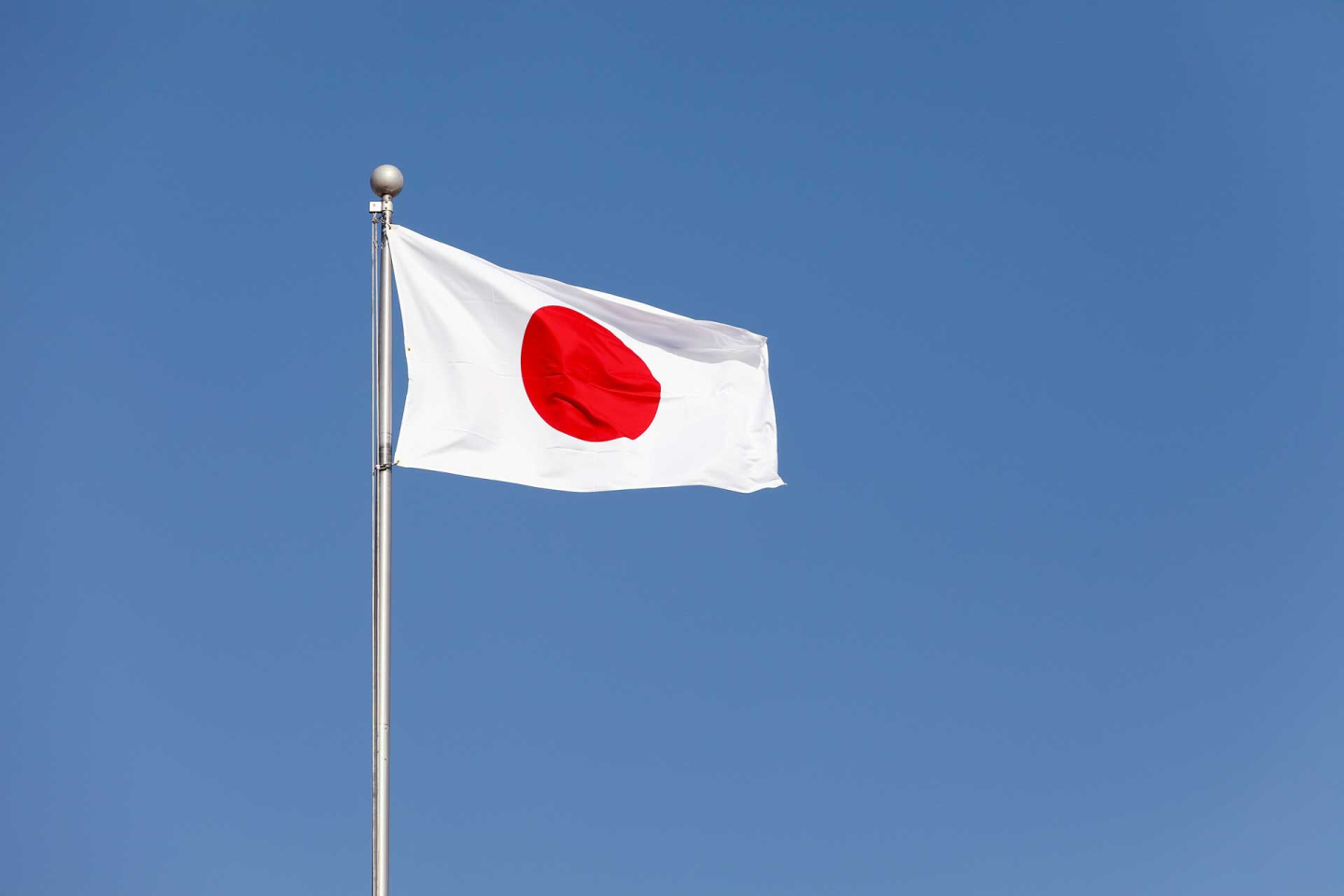- Japan’s ruling Liberal Democratic Party (LDP) has elected Sanae Takaichi, who is set to become the first female prime minister in the country’s history.
- Her victory reinforces expectations for continued fiscal stimulus and a patient stance from the Bank of Japan (BoJ).
- The Nikkei 225 index broke above 48,000 points, reaching a new record high, while the yen weakened beyond ¥150 per dollar.
- Markets are now reassessing BoJ expectations, pricing in an extended period of loose monetary policy and a delay in rate hikes.
- Japan’s ruling Liberal Democratic Party (LDP) has elected Sanae Takaichi, who is set to become the first female prime minister in the country’s history.
- Her victory reinforces expectations for continued fiscal stimulus and a patient stance from the Bank of Japan (BoJ).
- The Nikkei 225 index broke above 48,000 points, reaching a new record high, while the yen weakened beyond ¥150 per dollar.
- Markets are now reassessing BoJ expectations, pricing in an extended period of loose monetary policy and a delay in rate hikes.
The Liberal Democratic Party, which has governed Japan almost continuously since the 1950s, elected Sanae Takaichi as its new leader, replacing Shigeru Ishiba. The LDP leadership vote effectively determines the next prime minister, as the party holds a parliamentary majority. Takaichi — a seasoned conservative lawmaker and protégé of the late Shinzo Abe — is known for her support of Abe-style stimulus policies: aggressive fiscal expansion, corporate investment incentives, and strategic industrial spending. Her election signals a continuation of Abe’s pro-growth strategy rather than a shift toward fiscal restraint. Takaichi has pledged to revitalize Japan’s economy through strong state intervention, focusing on national capacity building, higher public investment, and closer security ties with the United States.
Markets interpreted her victory as a clear signal of pro-growth and accommodative policy. Takaichi’s agenda calls for increased public investment in key sectors — such as defense, semiconductors, and artificial intelligence — along with tax relief for households and businesses. She supports close coordination with the BoJ to maintain an expansionary environment rather than tighten financial conditions. This stance contrasts with earlier expectations that the BoJ might raise rates again by the end of 2025. Traders have since sharply reduced bets on near-term rate hikes, pushing short-term bond yields lower even as long-term yields rose on deficit concerns.

Before the vote, investors priced in nearly a 70% chance of a BoJ rate hike by year-end; by Monday, those odds had fallen to around 50%.
Market reaction
Financial markets reacted sharply, with capital flowing into equities. The Nikkei 225 (JP225) surged 4.60% to a record 48,100 points, led by technology, heavy industry, and real-estate stocks that benefit from easy credit conditions.

At the same time, the yen weakened nearly 0.70% against the dollar, breaking below the ¥150 level. Markets have labeled this dynamic the “Takaichi trade” — a strong rotation toward equities at the expense of bonds — reflecting expectations that fiscal stimulus and a delayed BoJ normalization will dominate Japan’s economic outlook in the coming months.

AMD rises on the wave of the OpenAI deal. Pre-market trading shows a 25% increase in shares.
Paralysis in France: New Chapter of Political Turmoil
Chart of the day: OIL.WTI (06.10.2025)
BREAKING: EU Retail Sales In Line with Expectations


